|
Printables |
PowerPoints |
Online exercises |
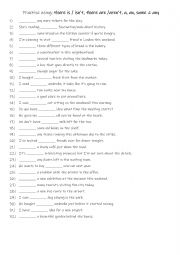
|
A1+-A2 Articles and quantifiers Practise using there is / isn�t, there are / aren�t, a, an, some & any
Learning the structures "there is / isn�t", "there are / aren�t", "a / an", "some", and "any" is essential for clear communication in English. They help students describe the existence or absence of things, specify quantities, and form both positive and negative sentences. "A" and "an" are used for singular, countable nouns, while "some" and "a...
Level: elementary
Age: 8-100
Type:
Downloads: 106
|
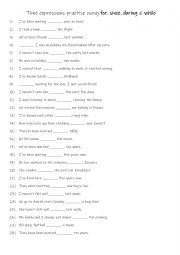
|
A2+B1 Time expressions practise using for, since, during & while
Learning to use for, since, during, and while is important because these words help student�s express time accurately in English, especially when talking about the duration and timing of events. For indicates the length of time an action takes place, while since pinpoints when an action started and continues until now, helping to show continuity. D...
Level: intermediate
Age: 9-100
Type:
Downloads: 101
|
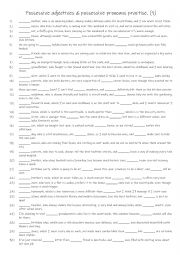
|
A1+-A2 Possessive adjectives & possessive pronouns practise. (1)
Learning possessive adjectives and possessive pronouns is essential for expressing ownership and relationships clearly and naturally in English. Possessive adjectives (like my, your, his, her) are used before nouns to show who something belongs to, while possessive pronouns (like mine, yours, his, hers) stand alone and replace nouns, avoiding repet...
Level: elementary
Age: 8-100
Type: worksheet
Downloads: 129
|
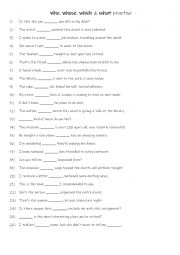
|
A1+-A2 Who, whose, which & what practise
Learning who, whose, which, and what enhances student�s ability to ask precise questions and provide clear information, especially regarding people, ownership, and specific choices. Who identifies people, whose indicates possession, which offers choices, and what gathers open-ended information. Mastering these words improves communication, making y...
Level: elementary
Age: 8-100
Type:
Downloads: 119
|
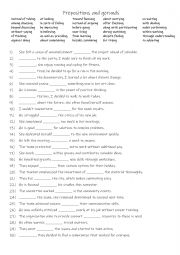
|
B1-B2 Prepositions + gerunds 2
Many English expressions rely on specific prepositions and gerunds. Mastering these can improve fluency and make language sound more natural. Using the correct prepositions and gerunds can elevate students writing style, making it more varied and engaging. First, students need to familiarise themselves with the 30 gerunds and prepositions to check ...
Level: intermediate
Age: 9-100
Type:
Downloads: 110
|
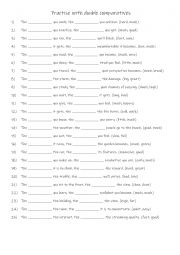
|
A2+-B1 Double comparatives
Double comparatives are a useful structure in English to express proportional relationships between two actions or situations, showing how one thing influences or depends on another. The structure typically follows the pattern: "The + comparative adjective + subject, the + comparative adjective + result." This construction helps convey cause-and-ef...
Level: elementary
Age: 9-100
Type:
Downloads: 129
|
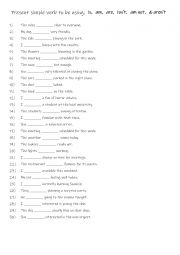
|
A1-A2 Present simple verb to be using is, am, are, isn�t, am not, & aren�t
Students read the sentences to see which form of the verb to be to needed to complete the sentences. Answers on page 2.
Level: elementary
Age: 8-100
Type:
Downloads: 102
|
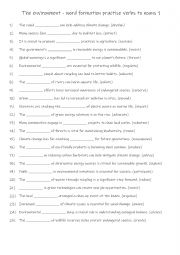
|
B1-B2 The environment - word formation practise verbs to nouns 1
Learning word formation, especially transforming verbs into nouns, is important for expanding vocabulary, improving communication, and expressing ideas more clearly, particularly in discussions about the environment. It allows for more precise and varied language, helping you describe both actions and their outcomes (e.g., "recycle" to "recycling")...
Level: intermediate
Age: 9-100
Type:
Downloads: 103
|
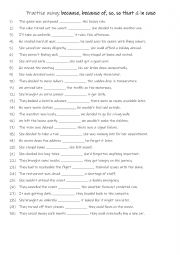
|
A2-B1 Practise using: because, because of, so, so that & in case 1
Learning to use "because," "because of," "so," "so that," and "in case" helps improve clarity and precision in communication. These phrases allow you to explain reasons ("because," "because of"), show results ("so"), indicate purpose ("so that"), and talk about future possibilities ("in case"). Mastering these structures enhances your ability to pr...
Level: elementary
Age: 8-100
Type:
Downloads: 106
|
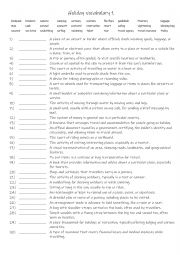
|
A2+-B1 Holiday vocab 1
Learning holiday vocabulary is essential for effective communication, trip planning, and enjoyment. It helps travellers navigate logistics, understand important terms like "passport," "reservation," and "itinerary," and engage with local culture through words like "souvenir" and "currency." Familiarity with terms related to safety ("travel insuranc...
Level: intermediate
Age: 9-100
Type:
Downloads: 104
|
|
|
|
|












